|
|
|
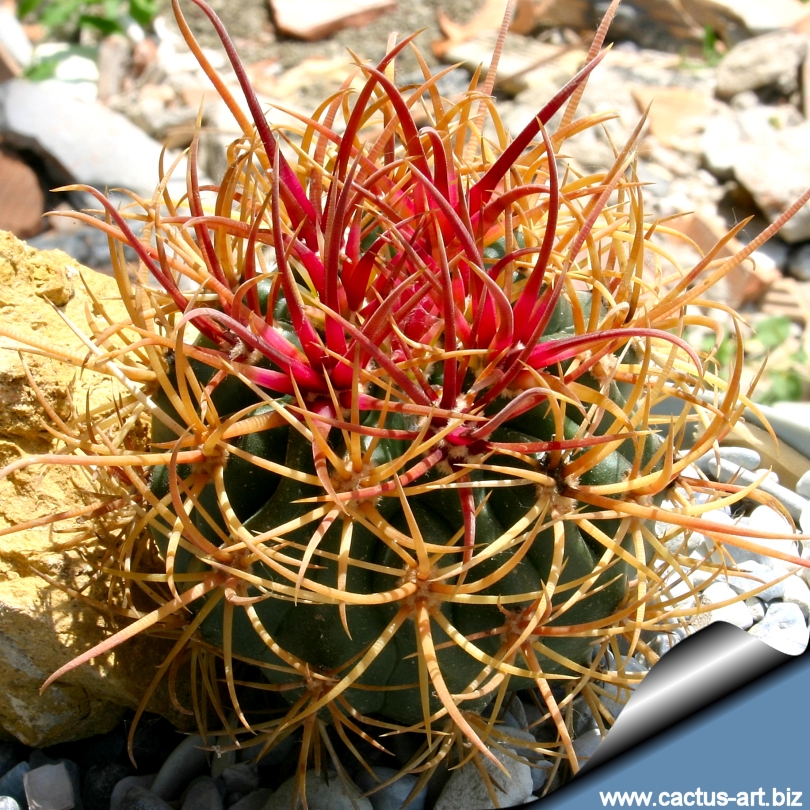
F.
chrysacanthus "rubrispinus" is a cultivated form with stunning red spines.
It is one of the best and colourfull
Ferocacti though quite slow growing.
This plant is very densely
spined and because of that, will tolerate
full sun.
|
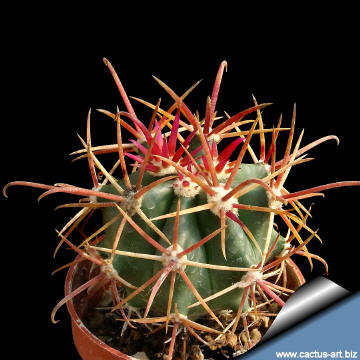 |
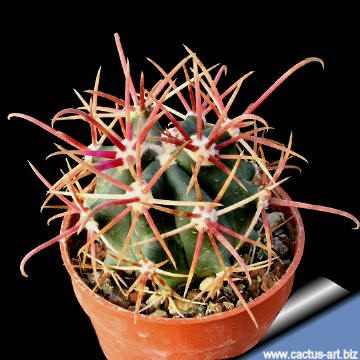 |
|
. |
|
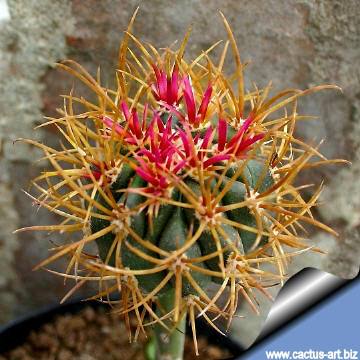
A grafted specimen |
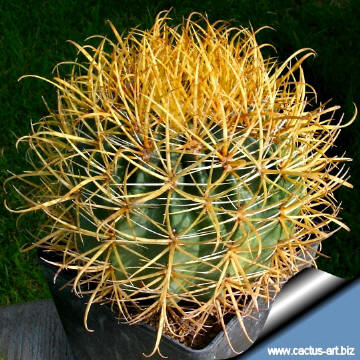
The standard yellow spined F. chrysacanthus
|
|
Propagation:
Seeds are the only way of
reproducing, but young
seedlings are often grafted on
Eriocereus jusbertii or Pereschiops to speed
the growth rate. However plant can grow on their
own roots for ages if watered carefully.
|
|


Advertising
|
|
|
|
|
Family:
Cactaceae (Cactus
Family)
Conservation status: Listed in
CITES appendix 2.
Ferocactus chrysacanthus f. rubrispinus (L.M. Ford ex
Orcutt) G. Unger
In: Die grossen Kugelkakteen Nordamerikas 210, 1992.
Origin: Mexico (Baja California: Only occurs
naturally on the island of Cedros, off the west coast of northern Baja
California and possibly on a neighboring island, West San Benitos, with
some reports of it on the adjacent peninsula.)
Habitat: With balanced and relatively high
average temperature, low rainfall but relatively high humidity and
specific soil composition (these conditions are difficult to imitate in
cultivation, and make this species relatively problematic to grow.
|
|
Description: Solitary
barrel cactus. The plant is very densely spined (one of the spiniest of
the Ferocacti) and because of that, will tolerate full sun. This
beautiful and rare form has bright red thick, twisted and more or less
hooked spines. Though some rare red spined specimens can be found
in habitat, most of the "rubrispinus" plants found in cultivation
are (presumably) horticultural hybrids selected for their spine colours.
This plants can be easily tell apart from the standard F.
chrysacanthus with characteristic golden, denser and
shorter yellow spines.
|
|
|
|

The standard F. chrysacanthus "with
golden spines"
Photo of conspecific taxa, varieties, forms and
cultivars of Ferocactus chrysacanthus:
Cultivation:
They are summer-growing and pretty easy plants thought
slow to start. They are suited for any rich, well
drained soil such us clay, pumice, lava grit, and only a little
peat or leaf-mould. If potted, repot them preferably in the spring, if their
roots become cramped. Generally, they should be repotted every
other year in order to provide fresh soil. However, this doesn't
necessarily mean they'll need larger containers. Fill about a quarter of
the pot with broken crocks, gravel, etc. to promote good drainage. After
repotting, do not water for a week or more. Water regularly during the
aestival growth cycle (this plant need plenty of water, but do not
overwater and let their soil dry out between waterings),
and also needs to be avoided wetting the body
of this plant while it is in sunlight. A wet cactus in the sun light can
cause sun burning which can lead to scares or even fungal infections and
death, keep rather dry in winter. No water should ever be allowed to
stand around the roots. Feed with a high potassium fertilizer in summer.
Exposure: Outside they need a bright exposure,
full sun or half shade in summer if the location is exceedingly hot or
bright, inside needs bright light, and some direct sun.
It can tolerate moderate shade, and a plant that has been growing in
shade should be slowly hardened off before placing it in full sun as the
plant will be severely scorched if moved too suddenly from shade into
sun.
Frost Tolerance: Light frost protection required for
safe cultivation, but can tolerate sporadic light frost. This
plants need a period of cool rest in winter to produce flowers
abundantly.
Diseases and pests:
Watch for infestations of
mealybug, scale insects and spider mite.
Plant in good conditions will
start to bloom when reach the diameter of only 12-18 cm.
|
|